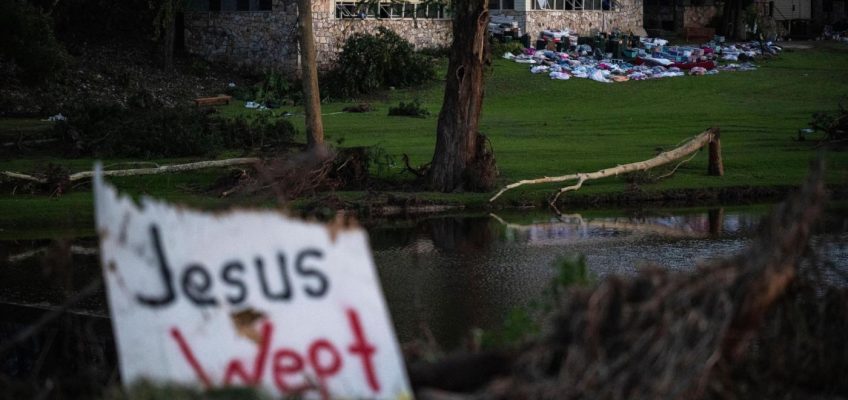By HILLEL ITALIE, Associated Press
NEW YORK (AP) — In the decade since she published her acclaimed debut novel, “The Turner House,” Angela Flournoy has confronted a few delays, welcome and otherwise, en route to completing her second book: her first child, a pandemic, speaking engagements, the occasional essay and, throughout, the challenges of creating a work of imagination.
“With nonfiction, you’re usually doing it on a deadline, there’s a constraint of time, and when it’s over, it’s over,” says Flournoy, whose novel “The Wilderness” is out this fall. “When you’re working with facts, they’re not really malleable. But with novels I create the reality. And the timing is up to me.”
The upcoming literary season will feature many books you might call long- or eagerly awaited: It will be in part a story of comebacks, completions and follow-ups, with some of the book world’s biggest names returning to fiction after absences of a decade or more.
Thomas Pynchon’s “Shadow Ticket” is his first novel since 2013’s “Bleeding Edge.” Kiran Desai’s “The Loneliness of Sonia and Sunny” is her first novel since her celebrated “The Inheritance of Loss” came out 20 years ago. Wendell Berry breaks a long absence from fiction with “Marce Catlett,” narrated by his alter ego and fellow Kentuckian, Andy Catlett. George Packer, the Pulitzer Prize-winning author and journalist, will publish his first novel since the 1990s, “The Emergency.”
“The Land of Sweet Forever” compiles stories and essays from the late Harper Lee, who in 2015 stunned the world by authorizing the release of “Go Set a Watchman,” a precursor to her classic “To Kill a Mockingbird.” Fiction also is expected from Patricia Lockwood, Ian McEwan, Thomas McGuane, Gish Jen, Ken Follett and John Irving, while two Booker Prize winners will have memoirs out: Margaret Atwood has written “Book of Lives: A Memoir of Sorts” and Arundhati Roy, best known for “The God of Small Things,” will publish “Mother Mary Comes to Me.”
Some books arrive highly anticipated, even if the wait was relatively short. R.F. Kuang’s “Katabasis” is her first novel since the bestselling satire “Yellowface,” which came out in 2023. Megha Majumdar follows her acclaimed debut from 2020, “A Burning,” with “A Guardian and a Thief.” Salman Rushdie’s story collection, “The Eleventh Hour,” is his first book of fiction since he survived a stabbing attack in 2022.
“We Love You Bunny,” the follow-up to Mona Awad’s dark campus satire from 2019, “Bunny,” is a meta-tale of a novelist gone viral.
“No book has stuck with me longer than ‘Bunny.’ I missed the fever-dreamy world of it so much,” Awad wrote in an email. “I think part of the reason had to do with the incredibly creative and rich reader response, which I still can’t believe. It kept the story alive and expanding in my head and I felt compelled to return.”
Thrills, chills, romance
“Gone Before Goodbye” pairs Oscar winner Reese Witherspoon with master thriller writer Harlan Coben. “Da Vinci Code” author Dan Brown brings back protagonist Robert Langdon in “The Secret of Secrets,” and “Exit Strategy” is the latest Jack Reacher novel from brothers Lee and Andrew Child. Richard Osman’s “Thursday Murder Club” series continues with “The Impossible Fortune” and Mick Herron has written his ninth “Slough House” book, “Clown Town.”
Child-friendly tension will arrive in a new edition of “Hansel and Gretel,” as written by Stephen King, with illustrations from the archives of the late Maurice Sendak.
New romance and romantasy is expected from Tessa Bailey, Harley Laroux and Ana Huang, whose “The Defender” is the second book in her “Gods of the Game” series. Ali Hazelwood follows her paranormal hit “Bride” with “Mate” and Brynne Weaver begins the “Seasons of Carnage” series with a tale of serial killers in love, “Tourist Season.” Erin A. Craig, known for such scary tales as “House of Salt and Sorrows,” has written “A Land So Wide.”
Celebrities telling all
Priscilla Presley’s “Softly, As I Leave You” continues her story from the memoir “Elvis and Me,” which ended with their breakup and Elvis’ death, in 1977. (The book was completed before her current legal battle with a former business partner). Michael J. Fox remembers the ’80s in “Future Boy,” Paul McCartney looks back on his post-Beatles work in “Wings” and Patti Smith reflects on childhood, love and grief in “Bread of Angels.”
Memoirs also are coming from Lionel Richie and Anthony Hopkins, Kenny Chesney and Cameron Crowe. Charlie Sheen opens up about his scandalous life in “The Book of Sheen” and Emmy-nominated actor Cheryl Hines, wife of Health and Human Services Secretary Robert F. Kennedy Jr., is scheduled to release “Cheryl Hines Unscripted.”
“With humor, wisdom, and unflinching honesty, Cheryl navigates the highs and lows of fame, family, and an unexpected foray into politics — complete with twists no one saw coming,” the publisher, Skyhorse, describes her book.
A break from Washington
Publishers have said that they didn’t expect books on President Donald Trump to have the same appeal as they did during his first term; apart from Jonathan Karl’s election chronicle “Retribution” and Scott Jennings’ “A Revolution of Common Sense,” few fall titles center on him and few so far are in the pipeline for 2026.
“Readers are looking more for books on the economy and geopolitical landscape than they are on anything more current in politics,” says Barnes & Noble’s director of books, Shannon DeVito, citing Andrew Ross Sorkin’s “1929,” about the stock market crash; and Joyce Vance’s “Giving Up Is Unforgivable: A Manual for Keeping a Democracy.”
Some prior administrations will be heard from. Former Vice President Kamala Harris has completed “107 Days,” about her hurried 2024 campaign. “Independent: A Look Inside a Broken White House, Outside the Party Lines” is a memoir from a White House press secretary under President Joe Biden, Karine Jean-Pierre, who has since announced her departure from the Democratic Party. Former first lady Michelle Obama’s latest looks back on her life — or at least what she has worn — in the illustrated fashion memoir “The Look.”
A handful of books anticipate next year’s 250th anniversary of U.S. independence. “The American Revolution: An Intimate History,” by Ken Burns and Geoffrey Ward, is a companion to Burns’ upcoming documentary. Walter Isaacson’s “The Greatest Sentence Ever Written” looks in depth at the Declaration of Independence. Donald Sassoon’s “Revolutions: A New History” documents the worldwide impact of America’s break from Britain. Joseph Ellis’ “The Great Contradiction” probes the flaws and virtues of Thomas Jefferson and other founders.
Other works will reflect on the war in Gaza, which nears its second anniversary, with releases ranging from former Hamas captive Eli Sharabi’s “Hostage” to diary excerpts from Palestinian Plestia Alaqad, “The Eyes of Gaza.”
Related Articles
Epstein accuser Virginia Giuffre wrote a memoir. Months after her death, it’s coming out
Concert review: Indigo Girls and Melissa Etheridge rev up the State Fair Grandstand
Liftoff: Stillwater space enthusiast debuts a labor-of-love astro-documentary
Crankbait mishap leads to the wrong kind of ‘hooked on fishing’
Skywatch: The moon’s constantly changing face
Poetry old and new
“The New Book” compiles final words from poet Nikki Giovanni, who died last year. Ada Limón’s “Startlement” is her first collection since her term as U.S. poet laureate ended last spring, while former laureate Billy Collins is releasing “Dog Show,” which features watercolor drawings by Pamela Sztybel.
“The Poems of Seamus Heaney” collects all of the work by the late Nobel laureate and “Only Sing” features more than 100 unpublished works by the late John Berryman. Harryette Mullen, Anne Waldman, Leila Chatti, Roque Raquel Salas Rivera and Chet’la Sebree are among the contemporary poets with books out this fall.
Visions of the future
You could fill a shelf, or an e-reader, this fall just with notable books on climate change, from Neil Shea’s “Frostlines” to Elizabeth Kolbert’s “Life on a Little-Known Planet: Dispatches from a Changing World.”
In “The Long Heat: Climate Politics When It’s Too Late,” authors Andreas Malm and Wim Carton examine our failure so far to prevent rising temperatures and what, if anything, is possible now, while warning of a “rough ride over the coming decades.” Environmentalist Bill McKibben, a self-described “hard realist” who has been writing about climate change for decades, has completed “Here Comes the Sun: A Last Chance for the Climate and a Fresh Chance for Civilization,” in which he challenges both climate deniers and those who say catastrophe is inevitable.
“We’re not going to stop global warming, that’s no longer on the menu, but we can still talk about whether we can stop it from cutting off civilization,” McKibben told The Associated Press, citing the dramatic reduction in costs for solar power and other forms of energy he believes no longer should be called “alternative.”
“People are used to thinking of solar and wind as the Whole Foods of energy — nice, but pricey. Now it’s the Costco of energy — it’s available in bulk and on the shelf.”




